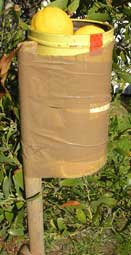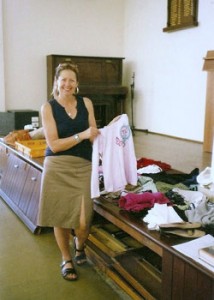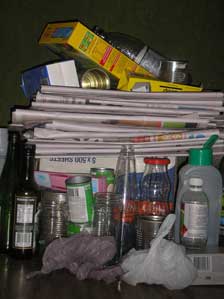Recycling for the Planet
Everything we touch, everything we do, everything we purchase – in one way or the other, comes from the Earth or utilises the Earth’s resources. By not fully replacing these resources we are destroying Earth’s balanced environment.
Some of these resources take many, many thousands of years (and sometimes more) to be replaced or rejuvenated. Some by-products take just as long (and even longer) to break down in the environment and become ‘safe’ again. Taking from the Earth or disturbing the Earth’s ‘balance’ should be considered a great ‘privilege’ and a responsibility of incurred human debt to the planet. Everything, absolutely everything that is taken must be replaced – to maintain crucial ecological balance. Re-using and recycling (as opposed to buying new) is one small step, on an individual level, toward undoing what has been done to the planet.
Our ‘throw-away’ society with its frivolous attitude toward the planet’s resources is no longer ‘in harmony with the planet’ but, instead, against it.
As the highest realm of life upon Earth it is our prime responsibility as ‘planet care-takers’ to watch over and consider all other realms: environment, plant and animal.
We must, therefore, change our lifestyle so that is is more in harmony with the planet and no longer detrimental to the future of the Earth and it’s living beings.
Why Recycle?
1. Saves money to recycle (instead of purchasing more of the same)
2. Good for the planet – reusing means less consumer products and less impact on the environment
3. Re-using and recycling taps into our all-important resourcefulness and creativity
Some Recycling Options
There are many, many ways to reuse recycled items – it just takes a bit of lateral thinking. Here are some ideas:
Tin Cans:
- Punch holes in the base and use as seedling or plant holders.
- Use as storage containers – particularly suited to tins with sealable lids.
- Different shaped cans make pastry cutters for scones, biscuits, etc.
- Follow Grandma’s lead and store soap scraps in a tin can. Punch holes in the base and hang under the tap. Running water will create froth and bubbles in the wash-bowl, bath or sink! For extra froth and bubble add water softener (bi-carbonate of soda or washing soda).
- Create a Tin Can Fruit Picker – Attach with wire, packaging tape or similar a large tin can to a long pole (old broom handle will do) as illustrated. It helps to sharpen the top edge of the can by removing the curled edge with tin snips – this enables the fruit stem to be severed from the tree more easily. The fruit then falls conveniently into the tin! Great for soft fruits that bruise easily. (See illustration opposite)
(From Information e-Booklet No. 15 – 50 Ways to Recycle a Tin Can). Click here for information about The Shoppe publications.
Newspaper:
- Newspaper torn into small pieces can comprise up to 10% of your compost heap.
- Layers of newspaper or shredded newspaper laid around the base of plants will provide organic matter (through its decomposition) while at the same time discourage weeds and conserve water.
- Crumpled newspaper makes ideal packing around breakable items when packing for storage, etc.
(From e-Booklet No. 31 – 50 Ways to Recycle Newspaper)
Plastic bags:
· They can be used as liners for the cat litter tray or small garbage bins, such as food scrap bins.
· Hang on hooks in accessible places to hold knick-knacks, rags, shoes, socks, dirty underwear, etc.
· Use as handy refuse holders when working in the garden or shed.
(From e-ooklet No. 48 – 60 Ways to Recycle Supermarket Bags)
_________________________________
Publications:
 Recycling for the Planet e-Booklet Set
Recycling for the Planet e-Booklet Set
Packed full of lots of resourceful and clever ideas that will save $$$’s and aid the planet!
8 Booklets: No. 15 – 50 Ways to Recycle a Tin Can, No. 16 – Waste Not Want Not. No. 17 – Home Paper-Making, No. 31 – 50 Ways to Recycle Newspaper, No. 32 – Home-Made Envelopes, No. 48 – 60 Ways to Recycle Plastic Supermarket Carry Bags, No. 63 – Making Play-toys from Recycled Materials, No. 77 – Recycling Rags. Price: $69.00 (Available for instant download) ADD TO CART
Click here for e-Booklet Set Information
Click here for information about individual publications
 _________________________________
_________________________________
Buy Second-hand – Its Good for the Planet!
When next shopping for ‘new’ clothing, ‘new’ furniture, ‘new’ kitchen equipment, ‘new’ household goods, ‘new’ car, ‘new’ whatever – consider buying second-hand. Why? Because buying ‘new’ uses MORE of the Earth’s resources complicating further the problem of over-use and depletion of the planet’s resources.
The five great advantages to buying second-hand or re-using:
1. Cheaper – usually much, much cheaper. There’s nothing more exciting that bagging a bargain!
2. Good for the planet
3. Better quality – Often ‘older’ type items (such as furniture) are sturdier and built more thoughtfully – and not in terms of immediate profit but for value for money and long term endurance.
4. Fashionable and up-market and makes for very interesting and exciting shopping!
5. PLUS you’re not feeding into the hands of ‘big business, profiteering and multi-nationalism’!
Where to Go?
Op-shops, Salvo stores, Garage sales, Car boot sales, Weekend markets – to name a few options. Plus there are free sources on the internet or join a recycling or LETS (Local Exchange Trading System – bartering group).
______________________________
Workshop
Living in Harmony with the Planet Workshops
Recycling for the Planet
Format: Why recycle? – outlining the benefits; Innovative & creative ways to turn discarded items into useful items; Money-saving by recycling; Do-It-Yourself Recycling; Waste Not –Want Not – the benefit and usefulness of recycling. Take Home Samples: Tin can utensil holder, Hand-made envelopes, Homemade paper, Bi-carb soda room deodoriser in recycled jar, Recycled soap product.
Available soon as a Workshop@Home – Click Here for information
Pam’s Post
My goal is to re-use absolutely everything relegated to the kerbside recycling bin at least once. A tall order indeed in today’s throw-away society. As hard as I try over the years the residue of ‘rubbish’ from my household seems to have increased – not decreased! It doesn’t take long for the bin to fill and the goal of ‘recycling everything’ becomes impossible. In South Australia a 10c deposit on plastic containers ensures a few dollars in the purse every couple of months at the recycling depot! I re-use tin cans as utensil holders, seedling pots, food storage, etc. I recently turned a range of large matching tin cans into a kitchen canister set – painted in appropriate decor colour! I use small cups and yoghurt tubs for seedling propagation, moulds for soap and candles. Newspaper, of course, in our dry climate makes ideal garden mulch for saving water – either in wads or shredded. Other paper (in small quantities) goes in my compost bin. Under advice from the local hardware store salesman a couple of years ago I filled the larger internal cracks in my house with tightly crumpled newspaper then covered it with the appropriate crack filler! It’s worked very well and saved me heaps on crack filler! Of course all kitchen scraps make precious compost for the garden. I re-use plastic bags as bin liners, cat-tray liners, storage bags, carry bags. The list of ways to ‘re-use, recycle and save’ is probably endless!
It never ceases to amaze and excite me what I find in second-hand stores or at weekend markets. I never buy new kitchen-ware – old saucepans, for example, are usually of a better quality than new. Often I can pick up replacement pieces for a dinner-set for just 50c or a dollar. A wonderful thing about second-hand furniture is that a bit of man-handling and an extra scratch or two will not frazzle you as much as the brand new stuff!! It allows for creativity – with a coat of paint, bit of decoration, new cover, etc. It looks unique and your very own creation! Most of my clothing comes second-hand – I can purchase up to 8 or ten pieces second-hand with the price I pay for a one new. I use my sewing machine to redesign or adapt clothing to a new look or new use. I’m in a LETS group and bartering goods with other people is a useful and economical way to swap my unwanted items for something ‘new’ and different.
Ignore those enticing ads on TV about shopping at the ‘best places’, interest free terms, etc. – Save your money and help save the planet by dropping into a second hand store for a bit of a look!
- Pam Marshall
The planet sighs in relief and smiles in
acknowledgement every time we
re-use and recycle!
We’re all in this together!
Your recycling ideas are welcome.
Published in The Shoppe Newsletter.
Send your ideas to:
pam@theshoppe.com.au




